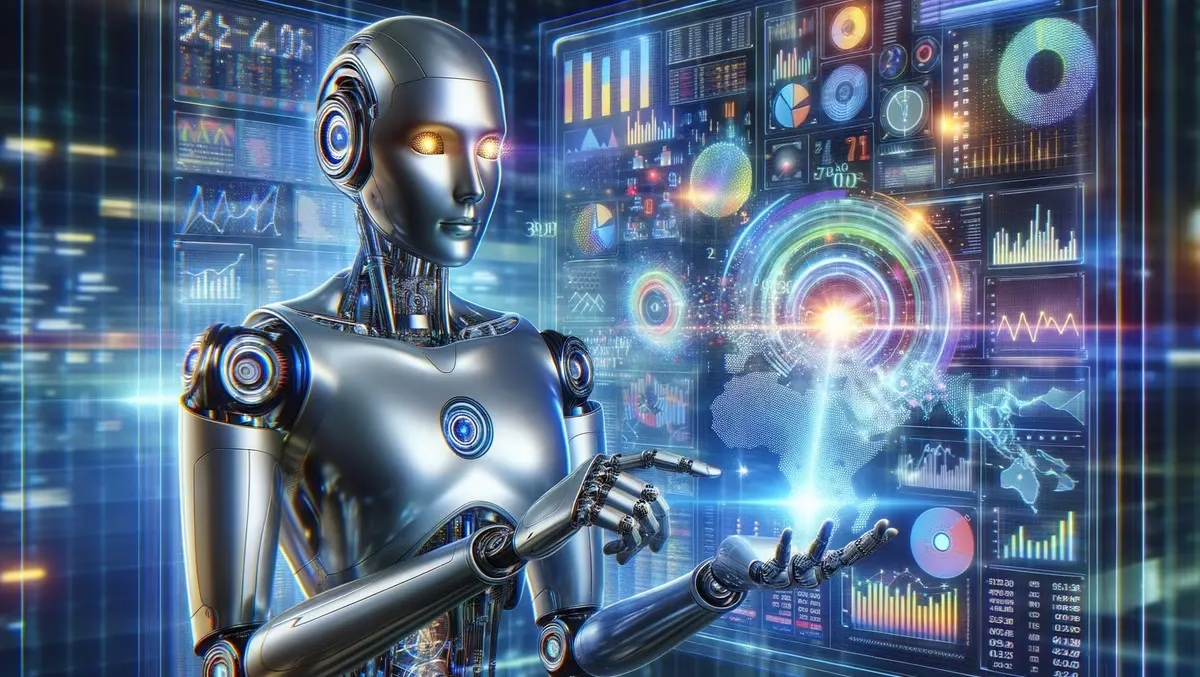Introduction
Artificial Intelligence (AI) and automation are transforming the way businesses operate. From improving efficiency and reducing costs to enhancing decision-making and customer experiences, AI-driven automation is reshaping industries worldwide. This article explores the impact of AI and automation on business operations, key benefits, challenges, and future trends.
1. Understanding AI and Automation
1.1 What Is Artificial Intelligence?
AI refers to the simulation of human intelligence in machines. It enables computers to learn, reason, and perform tasks that typically require human intelligence, such as speech recognition, decision-making, and problem-solving.
1.2 What Is Automation?
Automation involves the use of technology to perform tasks without human intervention. It includes robotic process automation (RPA), machine learning algorithms, and intelligent systems that streamline workflows.
| AI vs. Automation | Description |
|---|---|
| Artificial Intelligence (AI) | Machines with cognitive capabilities like learning and decision-making. |
| Automation | Rule-based systems that execute repetitive tasks efficiently. |
2. Benefits of AI & Automation in Business Operations
2.1 Increased Efficiency and Productivity
- AI-driven automation reduces manual work and speeds up processes.
- Businesses can handle larger workloads with minimal errors.
2.2 Cost Reduction
- AI eliminates repetitive tasks, reducing labor costs.
- Predictive maintenance minimizes equipment downtime.
2.3 Enhanced Decision-Making
- AI analyzes vast amounts of data to provide actionable insights.
- Machine learning helps businesses forecast trends and make informed decisions.
2.4 Improved Customer Experience
- AI chatbots provide instant customer support.
- Personalized recommendations increase customer satisfaction.
2.5 Competitive Advantage
- AI-powered businesses adapt faster to market changes.
- Companies leveraging automation outperform competitors.
3. Industries Transformed by AI & Automation
3.1 Healthcare
- AI-driven diagnostics improve accuracy and speed.
- Automated administrative tasks enhance efficiency.
3.2 Finance
- AI-powered fraud detection strengthens security.
- Robo-advisors assist in financial planning.
3.3 Manufacturing
- Robotics streamline production lines.
- Predictive analytics prevent equipment failures.
3.4 Retail & E-Commerce
- AI-driven inventory management optimizes stock levels.
- Chatbots enhance customer service.
- Personalized product recommendations increase sales.
- AI-driven marketing automation improves campaign effectiveness.
- Automated logistics and fulfillment enhance order processing efficiency.
3.5 Logistics & Supply Chain
- Automation improves order processing.
- AI forecasts demand and optimizes delivery routes.
4. How AI & Automation Are Transforming E-Commerce & Online Businesses
4.1 AI-Powered Personalized Shopping
- AI analyzes customer behavior and preferences to deliver personalized product recommendations.
- Machine learning enhances dynamic pricing strategies based on demand and competition.
- Visual search AI allows customers to find products through images instead of text searches.
4.2 Chatbots & Virtual Assistants
- AI-driven chatbots provide instant customer support with human-like interactions.
- Virtual assistants handle inquiries, orders, and troubleshooting 24/7, enhancing the customer experience.
- AI-powered voice assistants facilitate voice-based shopping and order tracking.
4.3 Automated Inventory Management
- AI predicts stock demands and automates restocking processes.
- Reduces overstocking and prevents supply shortages, improving cash flow management.
- AI-powered demand forecasting ensures businesses stock the right products at the right time.
4.4 AI-Driven Marketing & Sales Optimization
- AI optimizes email campaigns, social media ads, and PPC advertising for better conversion rates.
- Predictive analytics identify customer buying patterns and trends for targeted marketing.
- AI-based content generation tools create engaging product descriptions and ad copies.
4.5 Fraud Detection & Cybersecurity
- AI enhances fraud detection and transaction security, reducing chargebacks and fraudulent purchases.
- Machine learning detects suspicious activities and prevents cyber threats in real-time.
- AI-driven behavioral analytics help detect anomalies and prevent data breaches.
4.6 AI in Supply Chain & Logistics
- AI improves order fulfillment and last-mile delivery with real-time tracking and route optimization.
- Smart routing algorithms optimize shipping times and costs, reducing delivery delays.
- AI-powered warehouse robots improve order picking, packing, and sorting efficiency.
4.7 Voice Commerce & AI Assistants
- AI-powered voice assistants enable hands-free shopping experiences for consumers.
- Voice search optimization enhances product discovery, making it easier for users to find what they need.
- AI-driven chatbots provide seamless voice-to-text interactions, increasing user engagement.
4.8 AI-Enabled Visual Merchandising
- AI tools analyze customer interactions to create more engaging online storefronts.
- Augmented reality (AR) shopping experiences allow customers to try products virtually.
- AI-based personalization engines adjust website layout and product displays based on user preferences.
4.9 Automated Customer Retention Strategies
- AI predicts churn rates and suggests personalized retention offers for at-risk customers.
- Automated loyalty programs reward frequent shoppers based on purchase behavior.
- AI-driven email automation nurtures long-term customer relationships.
5. Challenges & Risks of AI and Automation
5.1 Job Displacement Concerns
- Automation replaces repetitive tasks, impacting employment.
- Upskilling and reskilling programs can address workforce shifts.
5.2 Data Privacy & Security Risks
- AI systems require vast amounts of data.
- Businesses must ensure compliance with data protection regulations.
5.3 High Implementation Costs
- AI and automation require significant initial investments.
- Long-term benefits outweigh costs in many cases.
5.4 Ethical Concerns
- AI decision-making can be biased if trained on incorrect data.
- Transparent AI governance is necessary.
6. Future Trends in AI & Automation
6.1 Hyperautomation
- Combining AI, machine learning, and RPA for full automation.
- Businesses achieve end-to-end process automation.
6.2 AI-Driven Decision-Making
- AI enhances strategic business decisions.
- Predictive analytics guide future investments.
6.3 Autonomous Systems
- Self-learning AI systems require minimal human intervention.
- AI-powered robots increase efficiency in various sectors.
6.4 AI-Powered Cybersecurity
- AI improves threat detection and response times.
- Businesses safeguard sensitive data effectively.
Conclusion
AI and automation are revolutionizing business operations across industries. Companies leveraging these technologies gain competitive advantages, improve efficiency, and drive innovation. However, addressing ethical concerns, data security, and workforce impact remains crucial. As AI continues to evolve, businesses must adopt a balanced approach to maximize benefits while mitigating risks.
